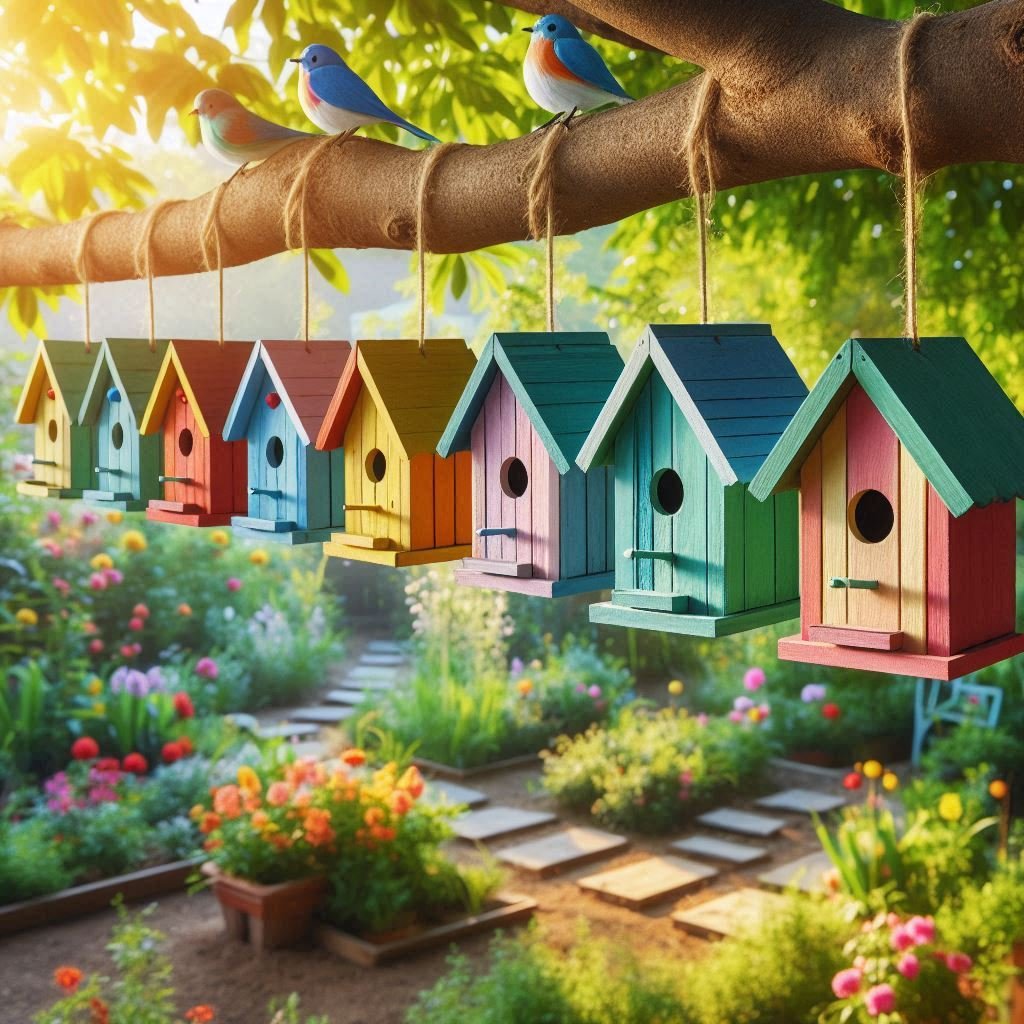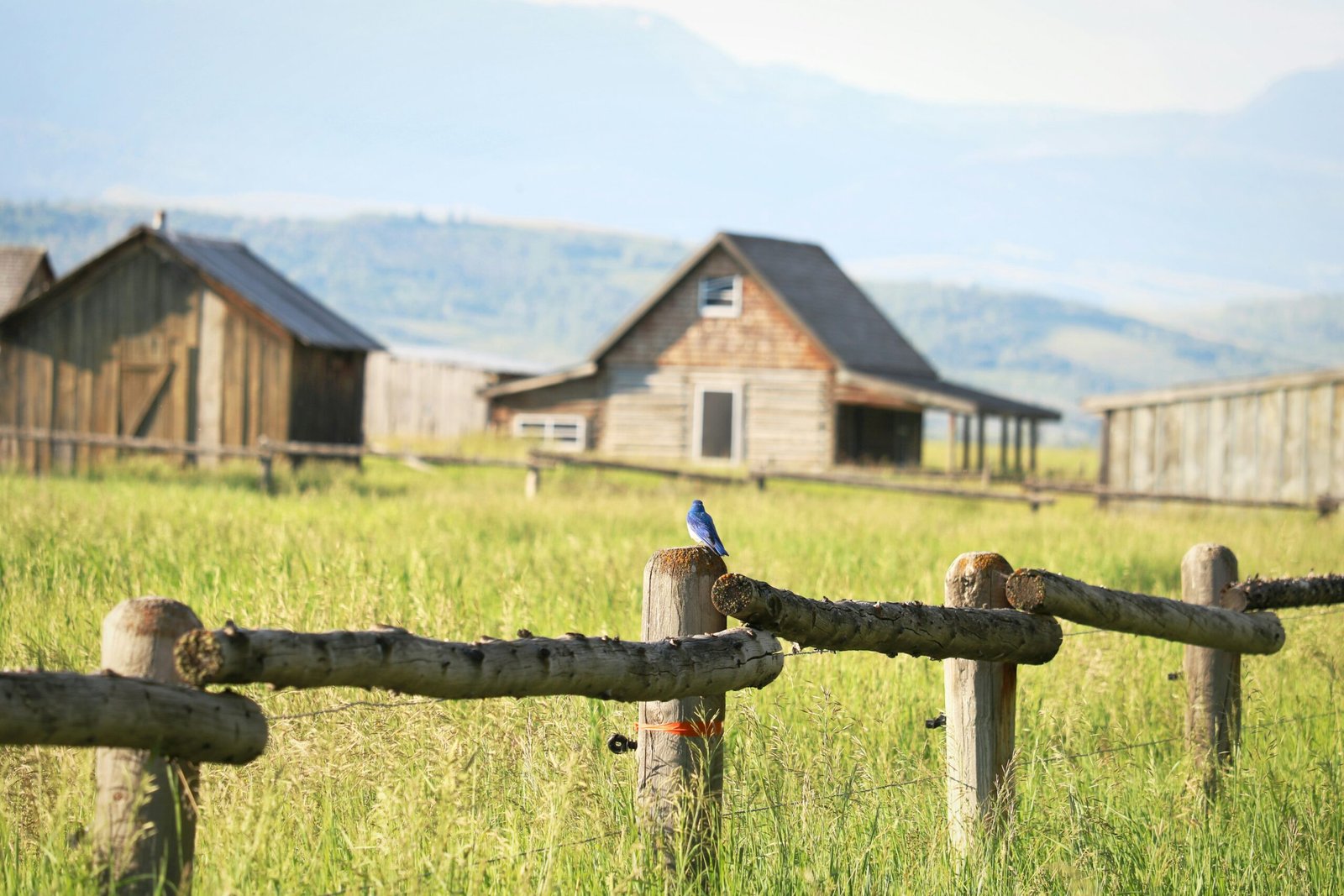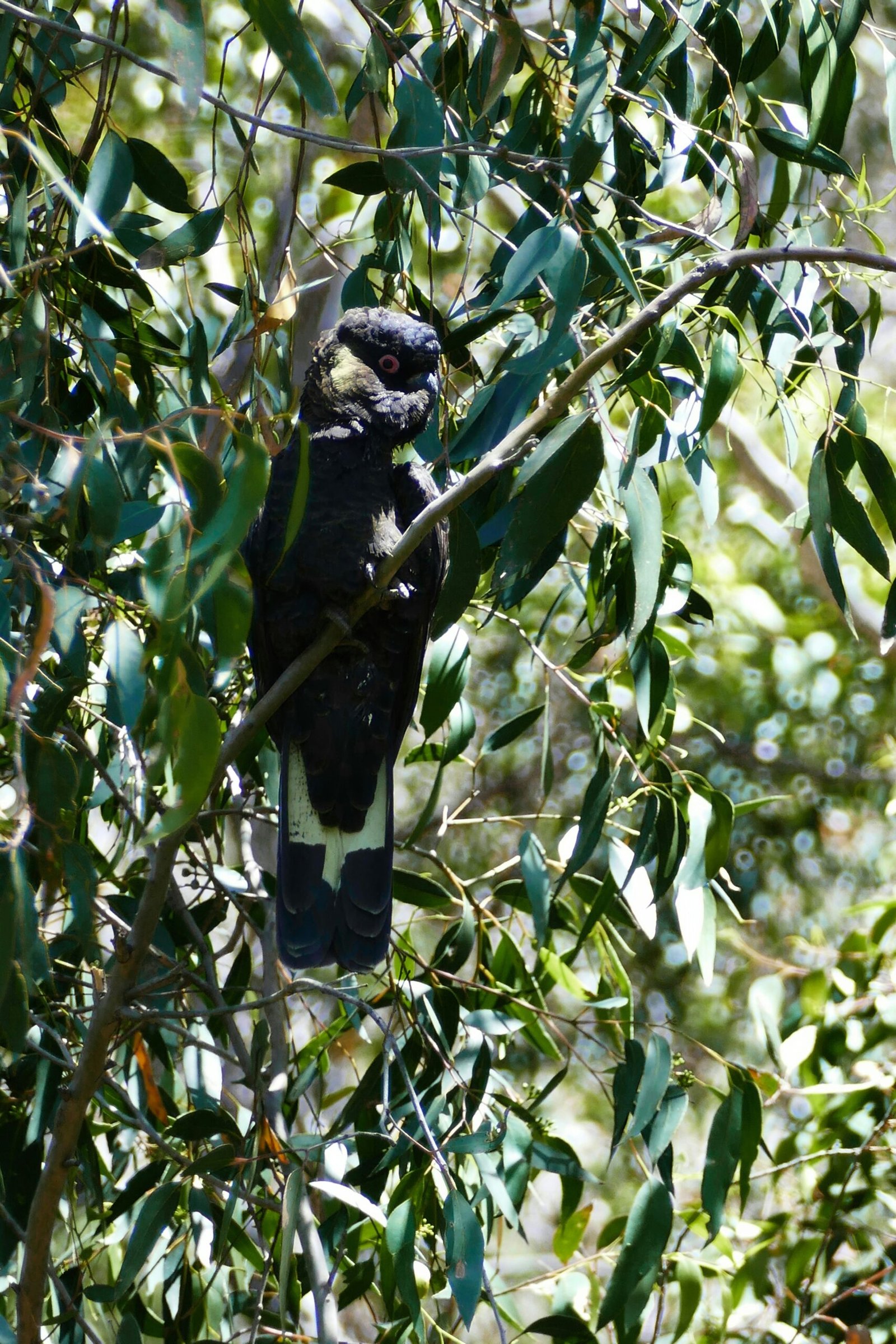There is great science and art in all of this if you want to attract bluebirds in your garden or open yard, it is more specifically dealing whether the nest boxes for bluebirds are distant enough. Hence, knowledge in construction of nest boxes does not only extend to how best one builds a comfortable nest box but also the general spacing of these nest boxes to optimize a good bluebird environment.
This guide aims to discuss the ideal location for bluebird housing beginning with a clear understanding of some of the factors that determine the bluebirds; cone nesting and its success; and its relation to other species.
What is the ideal spacing for bluebird houses?
Importance of optimal bluebird housing placement
In particular, it refers to the fact that it is crucial to determine the most suitable locations for installing bluebird houses in order to support a healthy and growing population of the bluebirds. Bluebirds being very selective when it comes to choosing a nest site hence the need for nest sites that fulfill the bluebird territory size requirement.
Another vital aspect that needs to be put into consideration regarding the bluebird nesting box distances is the environmental aspects, or the nearer other nests are placed. Proper spacing ensures less conflict and more healthy offspring as Botswana has strived to realize aspires.
For instance, making great blue bluebird houses 100 yards apart is one of the important measures to prevent territorial aggression and enhance the probability of fledging great blue bluebirds.
Furthermore, failure to determine the best point at which to place the bluebird house maximizes its utilization of places that are also occupied by other birds such as house sparrows and tree swallows. Bluebirds are a sort of cavity nesting birds and this makes them face stiff competition for the nest cavities with other nestling birds.
Therefore, the distance that we need to between the bluebird houses is not necessarily just adequate but also distances that eliminate competition and stress on the bluebirds.
Guidelines for eastern bluebird house placement
The idea on where to place eastern bluebird house is important and should meet certain requirements such like placing the nest boxes about 18-20 feet away from each other. These guidelines are as follows; they are stemmed from territorial behaviors of east bluebirds that must be certain amount of distance between the nests. To get a better chance of attracting bluebirds,
it matters to follow the aforementioned spacing standards. If you own a bluebird trail you need to guarantee that every a single bluebird house is set according to the under mentioned procedures to ensure that the available territory in any given area is adequate for every pair of blue birds.
Furthermore, the bluebird nesting boxes can be made to be constructed with specific materials such as baffles or fence post mounts to defend against raccoons. Below are some measures that one can take that making reference to the soil and its features and the general habitat conditions.
Following these guidelines, you contribute to increasing chances of attracting bluebirds for them to use the house as their home and nests for their young ones.
Factors affecting bluebird house spacing
There are rules regarding the proper location of bluebird house and these include landscape that is defined by the topography and the wildlife. For bluebirds to thrive, there must be no intensive vegetation cover with few trees since trees pose a danger to the nests and competition to get the best hiding places.
Thus, it is imperative to learn about your non-specific bluebird habitat management requirements. Other factors that need to be taken into account include the access to natural food sources and choice of perching sites for the purpose of the nest box.
Other factors include the presence of other birds that are also known to nest in holes in trees and other natural predators. For instance, house wrens and tree swallows have been identified to perform aggressive behaviors that tendencies to oust bluebirds from their preferred nesting areas.
Spacing out the boxes and making each box reachable by several paths minimizes aggressive confrontations and nest intrusion. Hence, the concept of how different and specific bluebird house spacing mechanisms will be of upmost importance for proper breeding and the continuous sustenance of this bird’s home.
How does nest box placement influence bluebird behavior?
Impact on bluebird territory requirements
The territorial characteristics also pose significant focus on the placement of nest boxes hence the bluebird territory requirements. However, bluebirds require a well-defined patch size that can accommodate their nests to breed and can minimize disruption of broods. This is especially true when considering bluebird eggs.
When placing the nest boxes, one must avoid having them too close with other nest boxes ideally over 100 feet apart to avoid the territorial aggression needs of the birds. Providing adequate space to the bluebirds enables them demonstrate normal activity and not to invade the territorial space of another bluebird.
Bluebirds may become aggressive and territorial especially during nesting and raise the issue when bluebird houses are very close together. Loss of territories can lead to decreased nesting rates and lower probability of fledgling. Thus, awareness and compliance with the specific guidelines for selecting nest box sites with regard to bluebird territory is crucial to fostering harmonious coexistence and enjoyment of these charming birds.
Bluebird interactions with house sparrow and tree swallow
A major threat to bluebirds is competition for the nesting cavities from other birds such house sparrows and tree swallow. Such interactions can help or hinder bluebird activity in a big way, so it’s important to keep close watch over them!
Specific examples include house sparrow, which is much more aggressive than the mountain bluebird and oust the bluebird from nest boxes if placed too near. Tree swallows may cause competition problems if not managed properly, despite the fact that they are less aggressive as compared to colorful purple martins.
This is because one of the most practical ways to reduce these interactions includes placing the bluebird and the tree swallow nests at least 20 feet apart from each other.
This spacing allows both species to live together without heavily competing with each other for the resources in the park. Much as you’ll have to manage the nest box, proper arrangement and selection improves the ability of bluebirds to protect their nests and their chicks without anyone’s interference.
Placement strategies to prevent nesting season conflicts
However, management undertakings such as proper positioning of bluebird houses need to be exercised when it is time for nesting, lest conflicts arise. One of the best practices is to place bluebird boxes at an adequate distance of 50 to 100 feet from each other and in the least on fences or other structures which are in the open and not concealed by shrubs or trees where other birds can nest.
This layout benefits bluebirds in two ways; firstly, there is enough area in which the birds can territory; secondly, interactions are minimised by their irregularity.
Further, to reduce possible competition, proper distances between nest-boxes for house wrens and tree swallows should be made, where house wrens could be placed in one nest box and tree swallow in another nest box. More management measures that can be taken to minimize access by other species include using specific entrance hole designs that are ideal for creating bluebird homes.
Through such measures, it is possible to greatly reduce the incidence of nest parasitism by invasive species, so that bluebird families can have a conducive environment to breed and raise their young, especially when bluebirds and tree swallows are considered.
What are the effects of two boxes placed near each other?
Possible benefits of multiple bluebird houses
There appears to be an instinctive idea of making as many bluebird boxes as probable situated as far from each other as possible, but in certain situation it is favorable to put two depressants plus two boxes into the same area. First, it can be used as a management tool to enhance the numbers of bluebirds by opening up new locations for their nests, but only to some extent. Such dual-box strategy applies preferably within extensive habitats where bluebirds can experience minimal challenges from other bird species.
This method can also help in observation and research, for example to watch the species behavior, fledging rates or study nesting success under conditions with controlled varieable. With some discipline, instances where bluebird houses are positioned within a closer range could boost local bluebird population likelihood particularly in areas of the habitat tailored for bluebirds. But this should be accomplished with definite strategies to avoid worsening the situation, and becoming an addition to the problems under consideration here.
Challenges with house wrens and nest competition
The author then noted that it is not advisable to put more than two bluebird houses together due to potential problems such as from house wrens. House wrens are aggressive nester and will intrusively take the place of blues bird even killing eggs and young ones.
An unfavorable regulation is the presence of bluebird boxes with distances between them that are too small: this leads to increased competition and possible aggression between the bluebirds, which will not allow for successful nesting.
To combat such problems it is advisable to incorporate techniques like installing wren guards on bluebird box and putting up wren house at least 100 feet away from other existing bluebird boxes. This results into establishment of a buffer zone and this helps to reduce cases of direct contact between the species. Indeed, there are measures that may be taken to bring to a house rationally the conditions in which both bluebirds and house wrens would not experience hunger or excessive rates of stress evoked by a competitor’s presence.
Maintaining distance to avoid bluebird and swallow wars
It is important to avoid placing the bluebird houses too close or in the immediate vicinity of those of the swallows to prevent aggressive behavior. Tree swallows, stratifying swallows, fight over nests, and the competition is obvious. Although this is a plausible explanation for construction of bluebird boxes,) this has the effect of disturbing swallow nests when bluebird boxes are put right next to swallow nests. The prohibition of construction, storage or placing between boxes a minimum distance of 50 years can also minimize such incidences.
Further, putting nest boxes that were proportioned to species through the doorway dimension can help to keep swallows away from bluebird domiciles. Because the community of birds is monitored while the nest boxes are checked often, one can intervene if competition or aggression is seen. Indeed, it is wise to adopt ‘bluebird architecture’ in order to minimize competition between the bluebirds and the swallows, meaning that management action should be taken in this regard to ensure that the two birds do not become hostile towards each other, with the end result, creation of the right environment to allow both species to successfully breed.
What resources can assist with effective nest box plans?
Recommendations from the Cornell Lab of Ornithology
There are some effective nest box plans which have available at the Cornell Lab of Ornithology. They include dimensions for bluebird housing and the type of materials to use as well as rules on where they ought to be located. Following the eastern bluebird house guidelines is quite relevant according to them to ensure proper nesting conditions are provided. By following these scientifically proven recommendations, bird lovers can skyrocket the chances of attracting not only bluebirds but also providing them with a secure nesting environment with fruitful results.
Also of interest, the Lab also offers information on bluebird’s territory and the recommended approaches to bluebird trails. The funds and materials available on their site are very much useful for those who are interested in helping increase and assure the continuity of bluebirds in nature. Adhering to these golden rules makes a considerable impact in the success to bring a favorable change in the nest bluebirds.
Insights from the North American Bluebird Society
There is also the North American Bluebird Society (NABS) which can also be of great benefit to any one with interest in promoting bluebirds through nest box placement. The NABS provides specific illustrations and designs of nest boxes and positions of the nest boxes for both eastern bluebirds and the western bluebirds, including when they are placed 25 feet apart. When it comes to assistance with problem solving they also give assistance with overcoming some of those problems such as competition by house sparrows and tree swallows and tips for preparation of the bluebirds’ house.
Bluebirds are part of a species that is commonly rehabilitated, and their efforts in bluebird habitat management aimed at preserving and enhancing the stability of the habitats. By consulting bluebird house spacing, spatioscopy about nest box placement, and more broadly about habitat, you can make specific determinations about spacing and placement to fulfill a habitat role. The knowledge and information that NABS is able to disseminate aids in the development of a committed tyro-informal bird specialist and is greatly beneficial to bluebird preservation.
Bluebird society’s contributions to bluebird recovery
Some of the many benefits of establishing the bluebird society to the process of rehabilitating the bluebirds include the following. Aims of such societies, such as the North American Bluebird Society, are to raise awareness of the measures needed for correct spacing of bluebird houses and successful management of bluebird territories. They have also been able to foster public awareness and apply its molecular marital work translate into great strides in the recovery of the bluebirds population.
By incorporating workshops, publications, and website and other online tools, the bluebird societies offer immeasurable assistance to new and even the most experienced birdmen. They provide direction on how to manipulate bluebird trails, antagonize predators, and manage disputes over nest to guarantee more bluebirds achieve reproduction and longevity. Years of unstinting effort put in by various bluebird societies is the best proof of the fact that local community conservation is most effective in ensuring that the beautiful bluebirds return to grace the landscapes.
How do environmental factors affect bluebird nest box placement?
Influence of bluebird habitat management
Some of the factors that I have considered are; Bluebirds habitat play a very crucial role in determining the positions of nest boxes as well as the overall performance of the nest box, especially when placed within 100 feet of the box. Proper management here is not just the setting up of bluebird boxes at strategic locations but the setting up of conducive environment for the bluebirds to thrive. This entails sowing space that will eliminate overcrowd plantations, space that will eliminate the hide out of prospective predators and. AUTHOR SATURATE perching space that animals will need to choral hunt.
Other measures also include conducting routine checks on the preservation status of the nesting boxes as well as doing regular checkup for the boxes to ensure they still fit the requirements of the bluebirds. When you manipulate the environment to meet the peculiar needs of the bluebirds, you can easily nurture the nest making standards and the breeding of the regional bluebirds.
Impact of elements like fence post and raccoon
Some things outside the host nest site such as the fence post and the raccoons can hugely influence the success of nest boxes for bluebirds. Nest boxes can also be mounted on fence posts which are considerably uprights and easily accessible especially in the countryside or agricultural setting . Nevertheless, the place where these posts are to be developed should be well thought out as there are some animals e. g. the raccoons which can climb and have complete access to the nests without restrictions.
Some of these risks include; The risks can be reduced by use of methods like putting fancy baffles up on fence posts and putting up appropriate nest boxes. When you treat these aspects of the environment, then provide a more favorable environment for the bluebirds to nest, and there would be higher chances of proper nesting and fledging. Such an evaluation would involve checking for signs of predators and shifting around placement mechanisms to meet these objectives continuously so as to continue safeguarding the nesting bluebirds.
Choosing optimal perch locations
The choice of sites of bluebird perch locations is essential in the nest box placement. Scouts objects that belong to perches where the bluebirds sit and look for food, over their territories and nests. Choosing balanced and strategic locations of perches close to nest boxes contribute to the bluebird’s protection of nests and accessibility of food sources.
Perches may be wild, wild perches include branches and those wild perches include branches and those made by the birds from miscellaneous objects, while the others include the designated perch sticks put near the boxes.
Perches should be placed within a measurable distance of or preferably within 20 feet of the nest box entrance hole so that the bluebirds are able to have strategic positioning on the perches keeping safe from potential predators.
It is a valuable consideration within the contributing factors of their daily function, and also as strengths for nesting as a whole. Including perfectly positioned ‘bluebird windows’ in your habitat management, you assist in providing just the right conditions to support all the requirements of the bluebirds.
FAQ
Q: How many feet apart should bluebird houses be placed?
A: Bluebird houses should generally be placed at least 18 feet apart. This is because bluebirds are territorial and need space to avoid conflicts with other bluebird pairs.
Q: What is a good distance to place bluebird houses in a bluebird trail?
A: For a bluebird trail, it’s recommended to place bluebird houses about 100 feet apart to maintain a friendly bluebird habitat and encourage more bluebirds to nest in the area.
Q: How should I position bluebird boxes to attract one bluebird?
Bluebirds prefer boxes so the entrance hole faces away from prevailing winds, which is particularly important when placing one box or pairs of bluebirds. Also, placing the boxes at least 5-7 feet above the ground can make them more attractive to bluebirds.
Q: What’s the recommended distance between bluebird houses to prevent aggression?
A: Bluebirds are territorial and placing boxes at least 100 feet away from each other helps reduce territorial disputes and allows each bluebird pair to have enough space.
Q: How high should bluebird boxes be mounted?
A: Bluebird boxes should be mounted about 4-6 feet above the ground. This height provides good visibility and protection for the bluebirds and their nesting material.
Q: Can bluebird boxes be placed within 50 feet of each other?
A: It’s generally not recommended to place bluebird boxes within 50 feet of each other because bluebirds are territorial and this close proximity can lead to conflicts.
Q: What’s the best height for mounted bluebird boxes to attract western bluebirds?
A: For western bluebirds, boxes should be mounted 5-7 feet above the ground. Make sure the entrance hole is clear of obstructions and facing away from strong winds.
Q: How far apart should nesting boxes for the eastern bluebird be placed?
A: Nesting boxes for the eastern bluebird should be placed at least 100-300 feet apart to ensure that each bluebird pair has enough territory and resources.
Q: What are some western bluebird nesting recommendations?
A: For western bluebird nesting, boxes should be placed in open areas with short grass, around 5-7 feet off the ground, and spaced at least 100 feet apart. Also, make sure the boxes have a 1.5-inch entry hole to accommodate the bluebirds.
Q: How can I ensure young bluebirds safely leave the nest?
A: To ensure young bluebirds safely leave the nest, make sure the nesting boxes are equipped with a predator guard and are cleaned out after each nesting season. Also, monitor the nest regularly for any issues and provide a safe environment around the nesting area.








